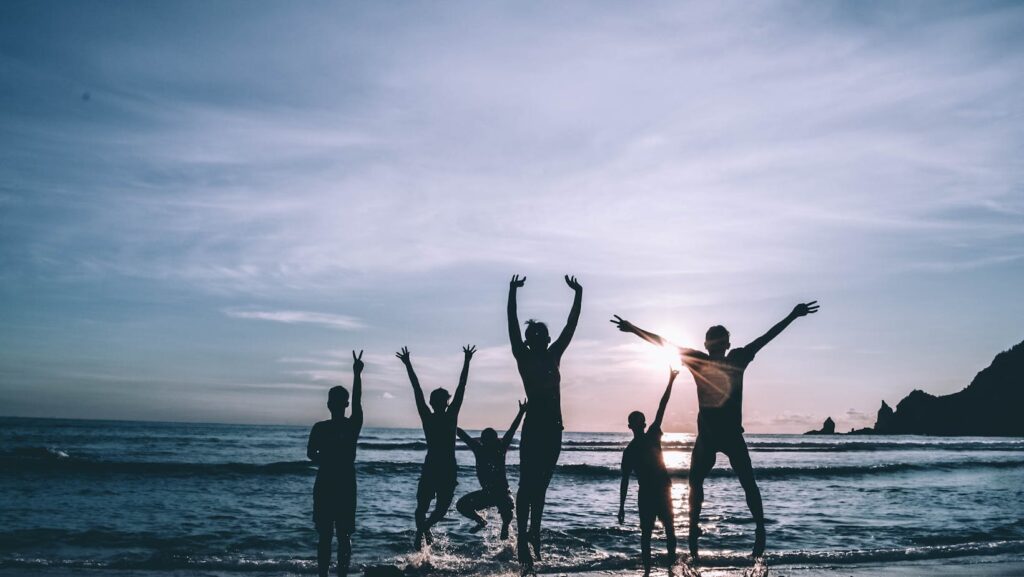Recreation and leisure, two terms often used interchangeably, yet each holds its unique essence. This article delves into the subtle differences and nuances that set them apart. It’s about understanding how these concepts, deeply rooted in our everyday lives, diverge in meaning.
The Terms “Recreation” And “Leisure” Are Both Defined By How They Differ From

Recreation represents intentionally engaging in activities to refresh body and mind. It transcends mere diversion, absorbing an average of 4.75 hours per workday, according to Bureau of Labor Statistics (BLS). It’s often associated with physical activities, such as running, swimming or cycling, but also includes mentally stimulating pursuits, like reading a book, watching a movie or playing a board game. Hence, the spectrum broadens with every individual’s personal preference, making it a diverse and fascinating concept.
After exploring the essence of recreation, turning attention towards the concept of leisure is quite revealing. Leisure presents an umbrella concept, embodying periods of free time that lie outside obligatory activities like work, eating, or sleeping. Uncover leisure, and it’s more about a state of mind, an opportunity for relaxation and rejuvenation. Unlike recreation, leisure isn’t necessarily active, it can involve passive activities such as sitting quietly or daydreaming.
Examples of Recreation and Leisure Activities
Common Recreational Activities

Recreation typically involves activities requiring planning and active involvement. These often provide an avenue for physical exertion or mental stimulation. Some common examples include:
- Outdoor Adventures: Engaging in outdoor activities like hiking, biking, or rowing can be recreational. They satisfy the physical exertion aspect of recreational activities. A 2019 study from the American Heart Association confirmed that outdoor physical activities contribute to heart health.
- Sports: Participating in sports, from football to tennis, can also be classified as recreational activities. They not only promote physical fitness but also foster teamwork and social bonds.
- Arts and Crafts: Activities like painting, knitting, or pottery satisfy the mental stimulation aspect of recreation. A report by the Mayo Clinic suggests that engaging in arts and crafts can reduce the risk of cognitive impairing diseases.
Common Leisure Activities
Leisure, on the other hand, emphasizes relaxation and spontaneous enjoyment during free time. Enrollment in structured activities isn’t indispensable. Instead, leisure activities often revolve around personal interests and hobbies. Some examples include:
- Reading: One of the most widespread leisure activities includes reading for pleasure. It’s often unplanned but boosts emotional well-being and cognitive abilities, as evidenced by numerous studies.
- Listening to Music: This activity is frequently associated with leisure time. Research in the journal Neuroscience of Behavior and Physiology indicates that listening to music can help reduce stress and anxiety.
- Meditation: Given leisure’s emphasis on relaxation and personal well-being, activities geared towards mindfulness, such as yoga or meditation, are often considered part of leisure time.
Implications of These Distinctions on Lifestyle
Impact on Well-Being
Recreation and leisure, each in its own unique way, contribute significantly to a person’s well-being. Participation in recreational activities serves as a catalyst for physical and mental exertion. For instance, engaging in a sport requires not only physical stamina but also tactical planning, encouraging overall physical fitness and cognitive agility. Contrarily, leisure activities, like reading a novel or listening to music, evoke emotional responses and elicit relaxation, reducing stress and contributing to mental wellness.
Social and Cultural Considerations

Recreation and leisure also have embedded social and cultural considerations. Recreational activities, such as community sports, often promote social interaction and community bonding. They serve to uphold societal norms, foster communication and teamwork, hence strengthening social cohesion.
Leisure activities, however, mirror cultural preferences and practices. Spending leisure time watching a movie, for example, can reflect a person’s cultural inclinations and expose them to different perspectives. Thus, both recreation and leisure activities shape, and are shaped by, individual and collective societal identities.
Understanding The Nuances Between Recreation and Leisure
Understanding the nuances between recreation and leisure is essential. They’re both integral to our lives but serve different purposes. Recreation, with its planned activities like sports, provides a platform for mental stimulation and physical exertion. It’s a catalyst for social interaction and community bonding.


